
The Point of The Needle: How the Ancient Craft of Stitching Shapes Us: Episode #45
Jo Andrews
The needle and thread have been humanity’s constant companions for tens of thousands of years: far longer than the dog, the sword, or the wheel, and much longer than reading and writing. Down the centuries the needle has rendered us incredible service and we have come to depend on it. And yet the activity of stitching has long been ignored in the record of human endeavour. Even the modern trend for embracing making and craft tends to leave out sewing. But a new book, just out, comes to try to redress the balance.
The Language of Thread: Why Sewing Matters and How We Were Taught: Episode #44
Jo Andrews
Sewing is one of the most vital but also one of the most overlooked human crafts. Every piece of clothing we wear has been put together by someone who has learnt to sew. Millions of people sew for pleasure and millions more earn their living in the textile and clothing industries – often in underpaid and unprotected jobs.
The craft of using a needle has been one of humanity’s greatest skills, ever since this tiny piece of technology came into use around 60,000 years ago. It is something that unites us all as human beings, regardless of ethnicity, religion or geography. For most of time sewing as a skill was passed from generation to generation. But, in the last few hundred years, as textiles and thread have been produced in abundance, how we learnt to sew became a political matter. Governments and churches, politicians and corporations all had a view on the morality and the methods necessary to turn out the ideal needlewoman.
Cabbage and Mungo: How Recycling Returned to Savile Row Episode #43
Jo Andrews
There is a quiet revolution happening on Savile Row in London, home to some of the world’s finest men’s outfitters. The makers of bespoke suits are embracing textile recycling in a unique new scheme. A number of houses on The Row have been collecting woollen offcuts as they tailor handmade men’s clothing – just as they did in times gone by – and sending them off to be recycled into new yarn. This is then woven into fresh cloth. The radical difference is that this time the recycled cloth is being bought back by these high-end workshops to be tailored and sold back to the Row’s own bespoke customers.
The People’s Art: Material and The Modern Masters: Episode #42
Jo Andrews
Have you ever wanted a Picasso on your walls – or maybe a Joan Miro, a Chagall, or perhaps a Raoul Dufy? For a time in the mid-50s in America, you could buy work by these artists for just a few dollars: that’s a few dollars a yard because these were fabrics and not original paintings – but they were beautifully designed, sophisticated, and elegant.
As peace crept back after World War Two there was an intense hunger for new design. After five long years of uniforms and sacrifice, people wanted something interesting to wear, and colourful fabrics to decorate their homes with. In America, manufacturers were quick to turn their machines from military production to domestic demand.
The Tangled Tale of Tartan: Episode #41
Jo Andrews
Who doesn’t love a good tartan? It’s everywhere from high fashion catwalks to shooting parties on winter hillsides, from military uniforms on parade to much-loved old sofas. It is at home in the humblest of cottages and the most splendid of royal palaces. It has a kaleidoscope of different uses and meanings. It is one of the most recognised patterns on earth, a global textile, visible almost everywhere.
But tartan is much more than a pattern, it is a fabric of contradiction and surprise. It holds many meanings, often simultaneously. It can represent the establishment and the power of the state, and at the same time signify rebellion and treachery. It can be an emblem of enslavement and oppression, or it can represent comfort, family, and home. Its meanings are as diverse as its many patterns.
A Dance to The Music of Time: The Costumes of The Ballets Russes: Episode #40
Jo Andrews
This is the tale of how textiles played a central part in one of the great cultural and artistic upheavals of the last century, helping to bring about a change that was to reach deep into many lives, influencing fashion, interior design, illustration, art and dance.
The Ballet Russe, gathered together by the mercurial figure of Serge Diaghilev in the early part of the twentieth century, was revolutionary in almost everything it did. The dancers, the music, the choreography, the sets and the costumes astonished audiences – no-one had seen anything like it before. The ballets became so popular that the costumes were copied by fashion designers and began to appear on the street.
A Small Sliver of Deep Blue Cloth – Unravelling the Textiles of Enslavement: Episode #39
Jo Andrews
This podcast discusses language and words considered offensive and discriminatory today.
A small sample of indigo cloth has been found in a British record office which is thought to be a rare surviving fragment of fabric used to clothe enslaved people in the Caribbean and North America. The Haptic & Hue team of Jo Andrews and Bill Taylor was alerted to its existence in early January. We travelled to Derbyshire to see it –and realised from a note on the back that we were looking at a piece of so-called ‘slave’ cloth, handwoven in Yorkshire. Millions of yards of this kind of fabric were made in Britain and Ireland to clothe enslaved people on plantations for nearly two hundred years, but until now none was known to have survived.
No Costume? No Carnival! Episode #38
Jo Andrews
It’s Carnival season, time to take to the streets for a party and see the spectacle. But Carnival is about so much more than that. At its heart is the idea that with costumes and masks, people can become shapeshifters, and transform themselves for a short period into someone else. Carnival is the work of a community and a chance for the powerless and the downtrodden to be free for a day and claim equality with the rich and powerful. Each Carnival is different and takes its traditions and ideas from its own culture and the needs of its own people.
Is The Needle Mightier Than The Sword? Episode #37
Jo Andrews
The little needle is one of the oldest tools in existence. We know that human beings began to use them more than sixty thousand years ago. Needles, and the textiles that came later have changed humanity completely and helped to make modern society what it is. But until recently very little attention has been paid to them. The contribution that textiles and the tools that surround them have made to our lives has been only dimly understood. This is changing as a new breed of archaeologist – textile archaeologists take centre stage and in doing so is completely altering our understanding of how humanity developed.

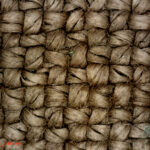

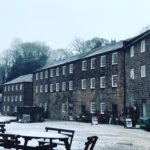
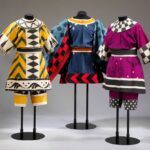
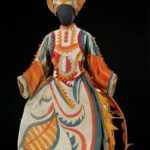

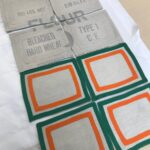
Images from Haptic and Hue’s fifth season of podcasts

